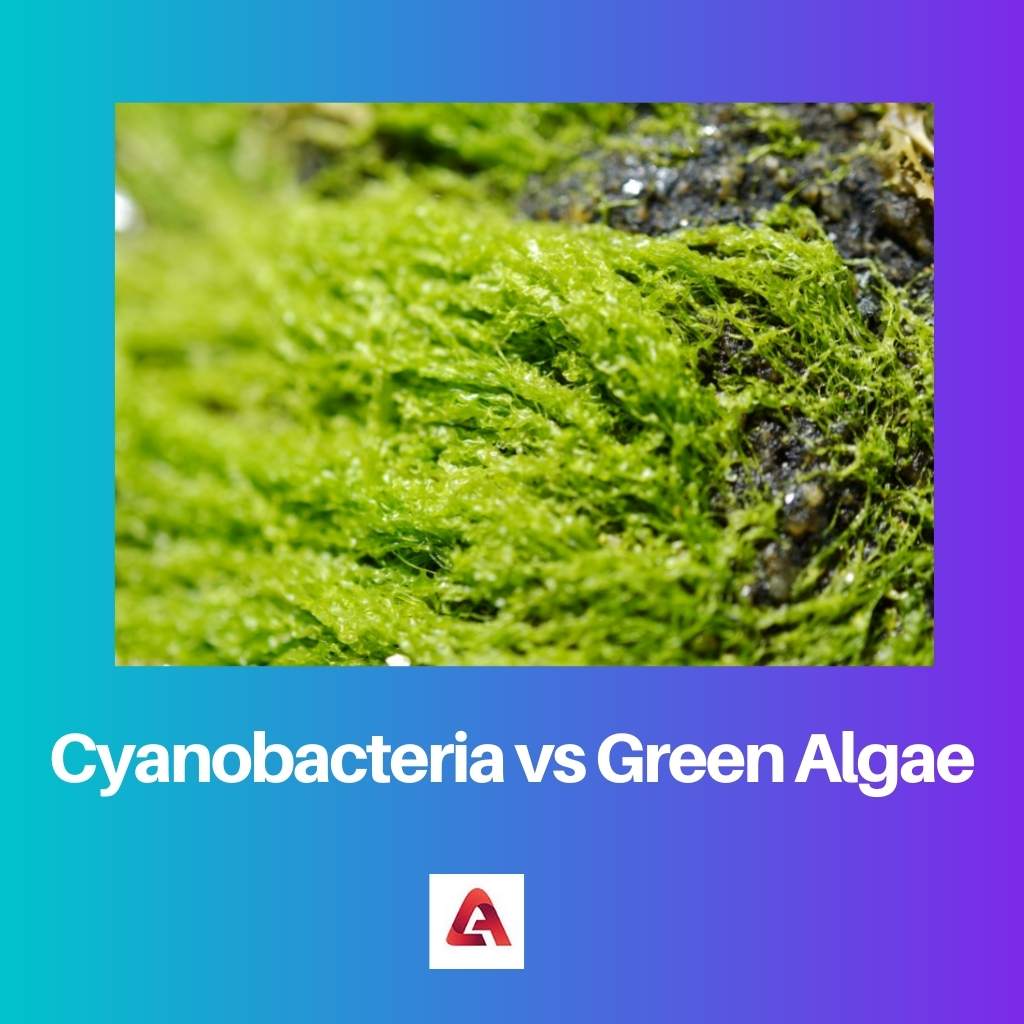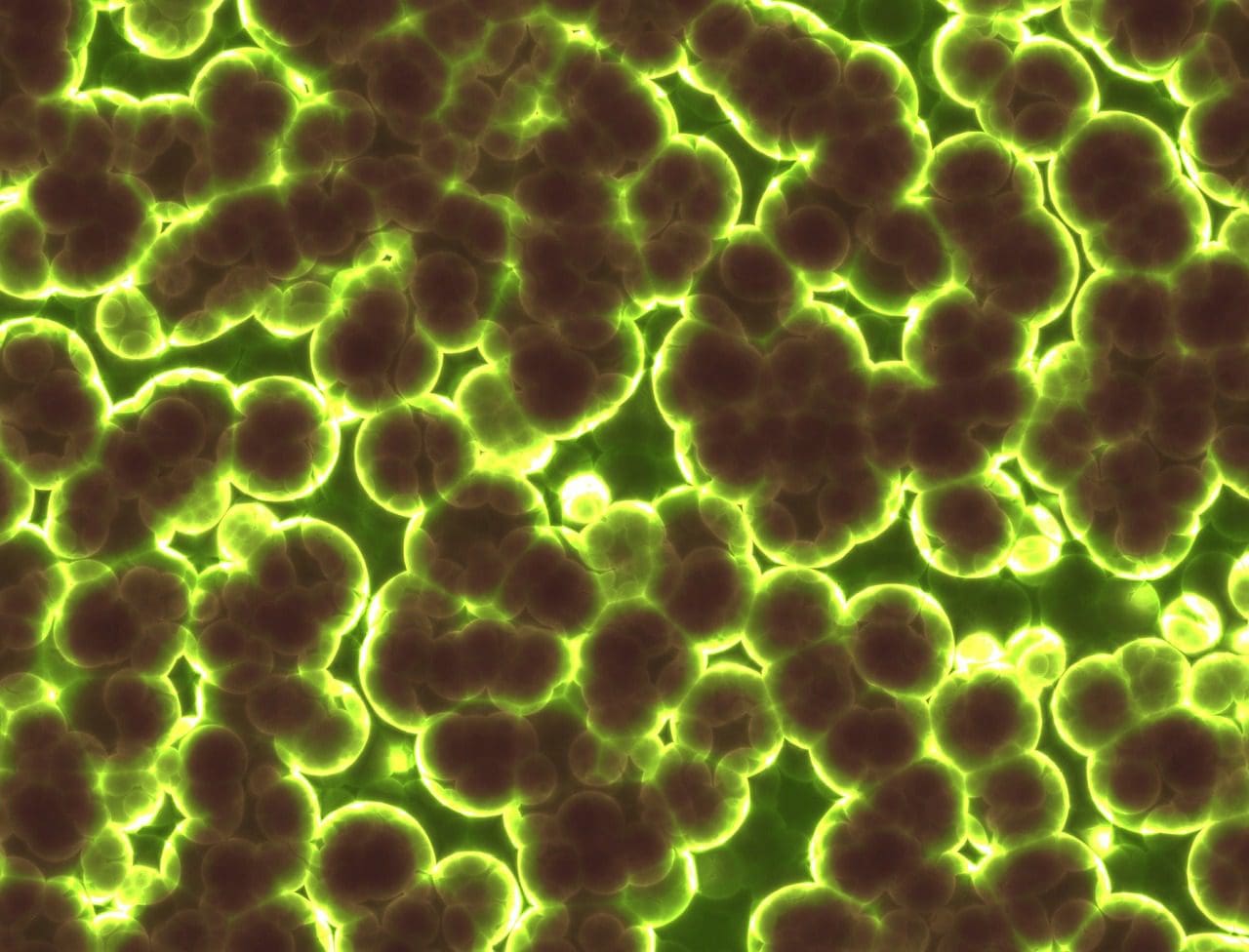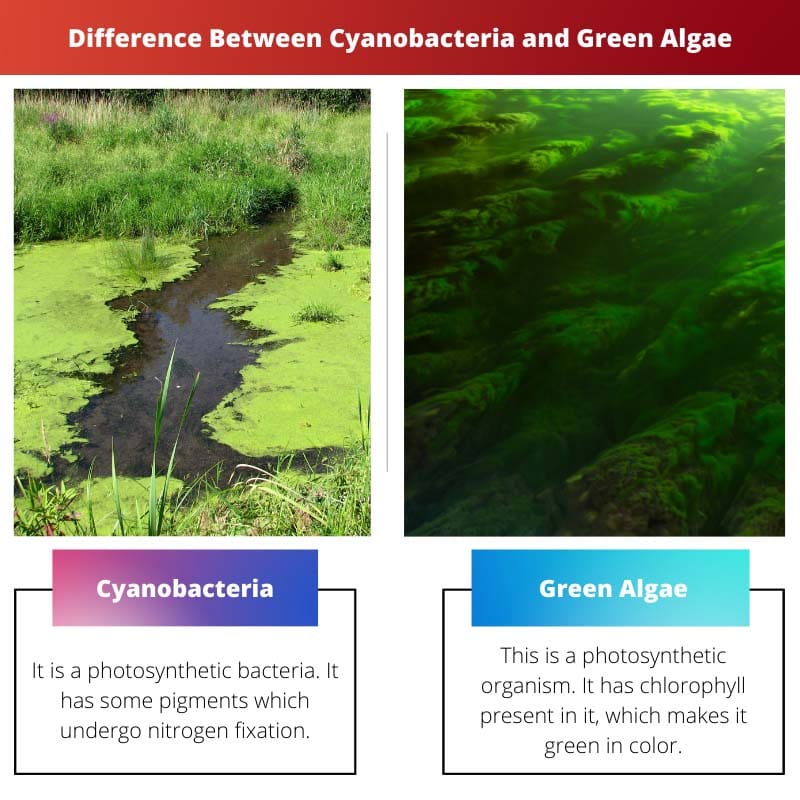Cyanobacteria and Green Algae are both organisms which are found in aquatic habitats. They grow from the evolution of algae. They are known as photosynthetic organisms.
Key Takeaways
- Cyanobacteria are prokaryotic organisms that can carry out photosynthesis, while green algae are eukaryotic organisms capable of photosynthesis.
- Cyanobacteria are commonly found in freshwater and marine environments, while green algae are found in a wider range of habitats, including freshwater, marine, and terrestrial environments.
- Cyanobacteria can harm other organisms due to their ability to produce toxins, while green algae are not harmful to other organisms.
Cyanobacteria vs Green Algae
The difference between Cyanobacteria vs Green Algae is Cyanobacteria are prokaryotes, and Green Algae are eukaryotes. Green algae contain chloroplast, but Cyanobacteria do not contain chloroplast. Green algae do not undergo nitrogen fixation, but Cyanobacteria undergo nitrogen fixation. Green Algae cannot store nutrients, but Cyanobacteria is enough and sufficient to store nutrients.

Cyanobacteria are prokaryotes. It does not contain chloroplast, which is why it is not green in color. Some cyanobacteria are heterotrophs. They are mainly found in aquatic habitats.
Green Algae are Eukaryotes. They contain chloroplast, which leads to green color in them. It is surrounded by membrane-bound organelles.
Comparison Table
| Parameter of Comparison | Cyanobacteria | Green Algae |
|---|---|---|
| Type of Organism | Prokaryotes | Eukaryotes |
| Membrane-Bound Organelles | Yes | No |
| Chloroplast | No | Contains one or more chloroplast |
| Nitrogen Fixation | It undergoes | It does not undergo |
| Swim | No | Yes |
| Reproduction | Asexual | Sexual, Asexual |
What are Cyanobacteria?
It is a photosynthetic bacteria. It has some pigments which undergo nitrogen fixation. It can be found in freshwater habitats. It can also be found in soil. It is either unicellular or multicellular.
These pigments have different colors. Phycoerythrin is red, and Phycocyanin is blue. It has vacuoles inside them. It is a prokaryotic organism. Some Cyanobacteria are heterotrophs.
It has no memory-bound organelles. It is capable of producing its food. It has a high capability to store nutrients in them. It does not undergo sexual reproduction. It lives symbiotically.
The gliding behaviour in them occurs due to changes in the trichome, which changes the depth of the organism inside the water. It undergoes asexual reproduction.

What is Green Algae?
This is a photosynthetic organism. It has chlorophyll present in it, which makes it green in color. It also contains other pigments like beta-carotene and xanthophyll.
The food is stored as starch or fats. Chloroplast contains photosynthetic pigment. It has a large cell. It is either uninucleated or multinucleated.
It can also undergo asexual reproduction by the formation of zoospores. It undergoes sexual reproduction by the formation of gametes, either same-size gametes or male or female gametes.
It consists of membrane-bound organelles. It contains more than one cell, which contains chloroplast. It does not contain any nutrients because it has no stability to contain nutrients.

Main Differences Between Cyanobacteria and Green Algae
- Cyanobacteria cannot swim in the water, but Green Algae can swim in the water.
- Cyanobacteria do not sexually reproduce, but Green Algae sexually reproduce.

- https://link.springer.com/chapter/10.1007/978-94-007-3855-3_1
- https://bsapubs.onlinelibrary.wiley.com/doi/abs/10.3732/ajb.91.10.1535

The scientific articulation of the differences between cyanobacteria and green algae, especially the detailed descriptions of their reproductive behaviors, greatly enhances the intellectual value of this article. The thought-provoking content presented through these comments is of utmost quality.
I am thoroughly impressed by the intellectual depth and scientific precision demonstrated in your comment. It provides invaluable insight into these organisms and enriches the overall discourse on the topic.
The detailed comparison table provides a clear and concise overview of the distinctions between cyanobacteria and green algae, making it easier for readers to comprehend the complex information. The references you have included further solidify the credibility of the content.
The clarity of your comment, especially the emphasis on the informative aspects of the comparison table, is enlightening. It enriches the discussion by providing additional valuable context.
I couldn’t agree more. The references are particularly beneficial for readers who wish to delve deeper into the subject. Your input is greatly appreciated.
The detailed descriptions and informative comparisons provided by the contributors greatly enhance the intellectual value of this discussion. The inclusion of references further solidifies the credibility of the information, making the overall content highly enriching and intellectually stimulating.
The intellectual depth and critical analysis reflected in the comments significantly enhance the informative content of this article, providing readers with a compelling study of cyanobacteria and green algae.
The insightful input and high intellectual standards maintained in the comments contribute to the in-depth understanding of cyanobacteria and green algae. The intellectual rigor and scholarly approach of the discussion are truly commendable.
The comprehensive explanations of the characteristics, behaviors, and environmental occurrences of cyanobacteria and green algae in their respective comments provide an enriched understanding of these organisms. The intellectual depth conveyed through these comments is highly commendable.
The intellectual depth and precision you have displayed in your comment further illuminate the detailed information provided in the article. It truly enhances the overall intellectual value of the content.
I couldn’t agree more. The intellectual quality of the discussion regarding these organisms has significantly enhanced the informative content of the initial article.
Cyanobacteria are capable of producing its food and have the capability to store nutrients. Green Algae, on the other hand, store food as starch or fats. Chloroplast contains a photosynthetic pigment and is either uninucleated or multinucleated.
Your detailed elaboration on the nutritional and cellular differences between the two organisms is quite comprehensive. This adds a deeper level of understanding to the original article. Thank you for sharing such insightful information.
The comprehensive and detailed elucidation of the characteristics, behaviors, and environmental occurrences of cyanobacteria and green algae provides readers with a profoundly enriching understanding of these organisms. The intellectual quality maintained throughout the discussion is highly commendable.
The thorough explanations and comparisons between cyanobacteria and green algae, as well as the inclusion of references, significantly enhance the informative nature of this article. The intellectual quality of the discussion is commendable.
I wholeheartedly agree. The intellectual rigor and depth displayed in the comments truly elevate the understanding of the topic.
The informative nature of the comparison and detailed explanations provided in the article has been further enriched by the insightful comments. The intellectual standards maintained in this discussion are truly commendable.
The meticulous elucidation of the characteristics and behaviors of cyanobacteria and green algae, particularly the emphasis on their different reproductive mechanisms, showcases the commendable intellectual rigor of the contributors. The intellectual value of the comments greatly amplifies the comprehensive understanding of the original article.
The intellectual depth and scientific acumen demonstrated in the comments adds significant value to the informative content of the article. Your insightful input contributes immensely to the enrichment of knowledge.
The detailed explanation of the main differences between cyanobacteria and green algae, especially the fact that cyanobacteria do not sexually reproduce, but green algae do, is a key takeaway from the article. It provides essential insight into their respective reproductive mechanisms.
The knowledge you have shared concerning the reproductive behaviors of cyanobacteria and green algae adds depth to the understanding of these organisms. The intellectual quality of your comment is commendable.
Your point about the reproductive differences is particularly enlightening. It showcases the biological disparities between the two organisms in a lucid and informative manner.
Cyanobacteria and Green Algae are organisms found in aquatic habitats and grow from the evolution of algae. They are known as photosynthetic organisms. Cyanobacteria are prokaryotic organisms that can carry out photosynthesis, while green algae are eukaryotic organisms capable of photosynthesis.
Your explanation regarding the difference and the importance of these organisms is highly informative. I wasn’t aware of the key differences between cyanobacteria and green algae, your comment has expanded my knowledge.